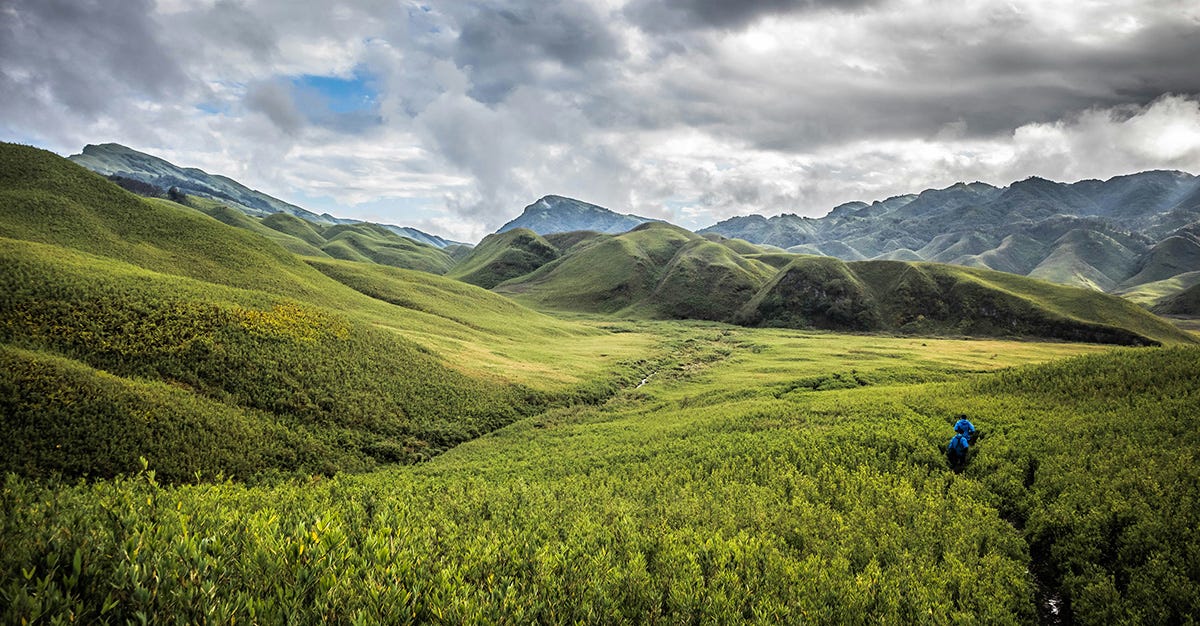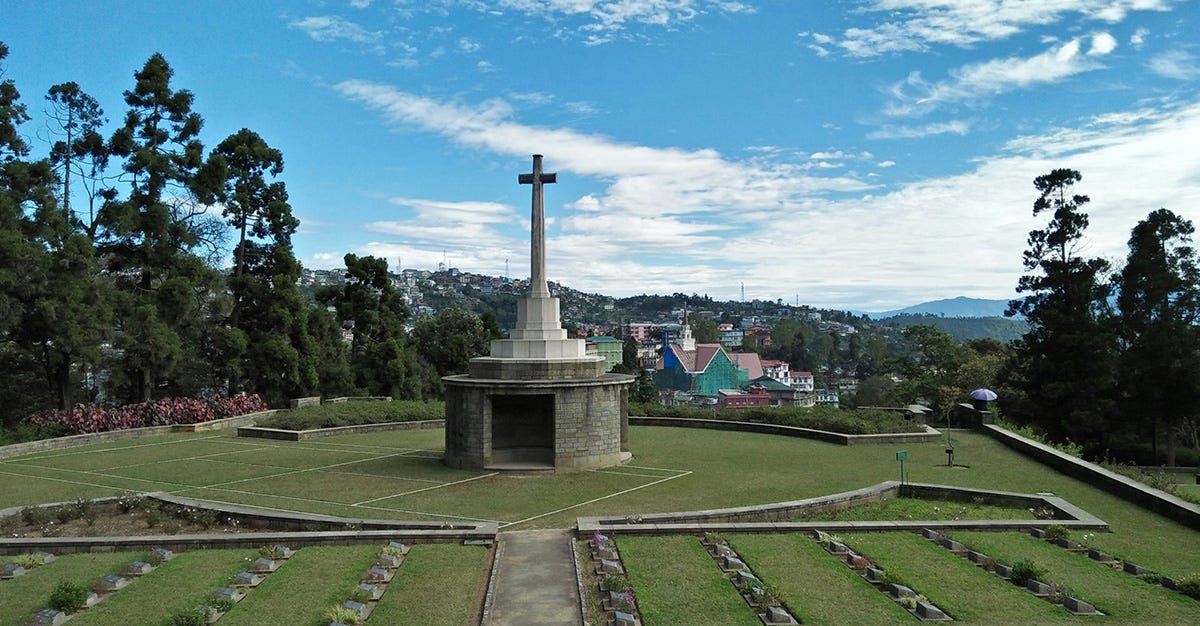World War commemorations this year will mark the 80th anniversaries of some of the major battles of 1944, which turned the tide, foremost among them D-Day and the battle of Normandy. You might wonder what is special about an 80th anniversary. It is probably the last time that a living veteran who fought in the battle can participate. That old soldier (or airman, or sailor) will now be over 100 years old. After his death there will be no one left to bear living witness to an event that changed history.
Some anniversaries inevitably get more attention than others. Take Kohima, for example. Where? you might ask. It’s in Nagaland, on India’s border with Burma. In April 1944 this little hill station was the last line of defence that stood between the seemingly invincible Imperial Japanese army and the plains of India to the west. Here a small garrison of Indian and British infantry fought an entire Japanese Division to a standstill on a patch of land hardly bigger than a football field. Afterwards Earl Mountbatten described it as “one of the greatest battles of history … in effect the Battle of Burma, naked unparalleled heroism, the British Indian Thermopylae.” But today, the battle is little known, or remembered.
Before the war, Kohima had been an idyllic colonial backwater, with spectacular views over the Naga Hills, surrounded by lawns and flowers, and also a tennis court. As the Japanese advanced, the defenders, taken by surprise, tore up the gardens and dug themselves in to await the coming onslaught. For thirteen days and nights they held out, beating off wave after wave of attack, under constant artillery and mortar bombardment and sniper fire from the surrounding hills. Often just yards apart, Japanese, Indian and British soldiers engaged in savage hand-to-hand fighting with whatever weapons were to hand, even trenching tools.
My father, John Shipster, reached Kohima as part of the relieving force in May 1944. Just 22, he was commanding an infantry company in the Punjab Regiment, part of Slim’s 14th Army; a seasoned veteran of heavy fighting in Burma, in which half his battalion had been casualties. He himself had been severely wounded, and afterwards was awarded the DSO.
Recovered from his wounds, he was now back in action. The scene that greeted him was one of utter devastation. The trees were gaunt skeletons, the ground torn up by shellfire and littered with unburied dead bodies. The stench was appalling. The once-pristine gardens now resembled an apocalyptic scene from the Somme. Though the garrison was relieved, the Japanese were far from beaten and it took a further two months of bloody fighting to drive them out of Nagaland and into Burma.
After the war, the battlefield became a cemetery. The lawns and flowers were restored and the tennis court again marked out, this time in stone. Two posthumous recipients of Victoria Crosses are buried there. At the base of the ridge is a massive rock, heaved into place by Naga tribesmen, which bears the inscription: “When you go home/Tell them of us and say/For your tomorrow/We gave our today.”
When I was growing up, Dad seldom spoke about the war. Then in 1988, when I was posted as a diplomat to India, we planned to visit the battlefield together. We travelled slowly by train across the Indian plains he had known as a young soldier, first to his regimental depot near Ranchi, where he received an emotional welcome. But when the time came to proceed to Kohima, he said no: he preferred to let his memories rest undisturbed. He lived to a good age, but during his last years his sleep was racked by nightmares, which he could never clearly recall on waking.
In 1990, as part of a small group of Burma veterans, he visited Japan to meet Japanese soldiers who had fought at Kohima. This was viewed at the time by some British veterans, especially ex-POWs, as almost an act of betrayal. Dad understood their bitterness but felt it was the right thing to do. Meeting his elderly Japanese hosts and sharing memories, he found peace and reconciliation. During the visit he presented his personal notebook and map of Kohima to a former Japanese company commander who had fought there.
Towards the end of his life, already suffering from Parkinson’s disease, he began to write a memoir of his wartime experiences. Although a practised raconteur, he found writing difficult. But gradually the story took shape, and by the middle of 1999 he had a workable draft. Along the way I offered advice, encouraging him to say more about himself as a young officer far from home, commanding Indian soldiers in the thick of savage fighting. But he remained reluctant to lay bare his innermost feelings, thinking it uninteresting and also too self-centred.
I did not altogether give up. Before the manuscript went to the publishers, I asked Fergal Keane, the BBC correspondent, whom I had got to know in South Africa in the early 1990s, whether he would read the manuscript and interview Dad. He agreed.
Dad found these sessions difficult, but the recordings were a revelation, a contest of wills: Fergal sympathetic but persistent, deceptively skilful, probing for insights that would enrich the story; and Dad, stubbornly resisting and parrying with bluff humour, occasionally opening up to a degree he never had with me or our family.
The result was some vivid new material for the book. But by this time Dad’s health was failing, and he was impatient to see his story in print. In his foreword, Fergal wrote a generous appreciation: “The hours I have spent in his company I will treasure: he has shown me the value of courage and consistency. This book is a testament to the valour of many men; it also reminds us of a sacrifice that succeeding generations must never forget.” Dad saw his book, Mist on the Ricefields, published in 2000 but died a few months later.
Although these interviews did not reshape Dad’s book, they aroused Fergal’s interest in Kohima. He began to dig deeper, seeking out other veterans, including Japanese, to hear their own personal stories before old age overtook them. Combined with his busy portfolio as BBC foreign correspondent, it took years of diligent research and interviews, including visits to Japan, to complete the story. All that remained was to visit Kohima itself.
In 2009 we travelled there together – my first visit too – and spent several days walking the battlefield, speaking to local Indian and Naga veterans and visiting the memorials. At the end of our stay we chanced upon a group of elderly Japanese tourists: sons and daughters of soldiers who had not returned home from the war. They were led by a young Shinto priest, whose grandfather had been killed near Kohima. I showed him a picture of my father, and he in turn pulled out of his pocket a sepia photo of a young man in an oversized uniform, staring seriously into the camera, flanked by his parents. He said he would be performing a ceremony for the families at the cemetery and invited us to join them.
The following morning we looked on as they gathered in silence on the tennis court, set up a makeshift altar and performed a service of remembrance. One by one, they bowed, knelt and put a pinch of incense on the flame. An elderly woman, carrying photos of her uncle and father whom she had never known, read a message to them, her voice shaking with emotion. After some concluding prayers, the priest thanked us for being there. Our presence, he said, had helped them find comfort and peace. In reply I explained why we had come and how profoundly Kohima had affected my father. Also how, when British veterans had travelled to Japan to meet their former enemy, they had met with anger and incomprehension from some other veterans, who had suffered terribly at the hands of the Japanese whom they could not forgive. But visiting Japan and meeting his former Japanese foes had helped my father find a deeper understanding and peace.
The following year, Fergal’s book, Road of Bones, the Siege of Kohima, was published to critical acclaim, especially for its attention to Japanese perspectives. It was dedicated: “In memory of John Shipster, soldier.”
In January this year I revisited Kohima, this time with my son, Robert. I wanted us to walk together on ground trodden by his grandfather eighty years before. As with Dad, we travelled by train across India. In Kohima, I noticed that much had changed. Fifteen years’ rampant property development had covered the hills and ridges, traffic choked the narrow roads and previously open vistas were now blocked by hotels and apartments. Only the cemetery, with its neat lawns and flowerbeds, was unchanged, a precious haven in a bustling resort. Locals and tourists came to enjoy its peace and tranquillity, especially at sunset. But not all understood its significance. One Indian couple told us they thought it was a battle between British forces and Indian nationalists.
History and remembrance are kept alive by the living. As each generation moves on, memories and stories become compressed, distorted and sometimes lost. Already, quite different narratives compete for primacy: a heroic victory for the British Empire and civilisation, versus an anti-colonial skirmish that hastened Indian independence. In twenty years’ time, if the battle of Kohima is still commemorated, it will be as distant to the living as Balaclava was to me when I was growing up, and its legacy will be even more muddled.
But our visit keeps alive, at least for another generation, our own family memory of a brave young man who eighty years ago served faithfully and well; whose life and character were profoundly affected by his experiences; and who overcame the scars of war to seek reconciliation and understanding with his former enemy.
Michael Shipster, CMG, OBE, is a former British diplomat whose overseas postings included the Soviet Union, India, South Africa and the US.







